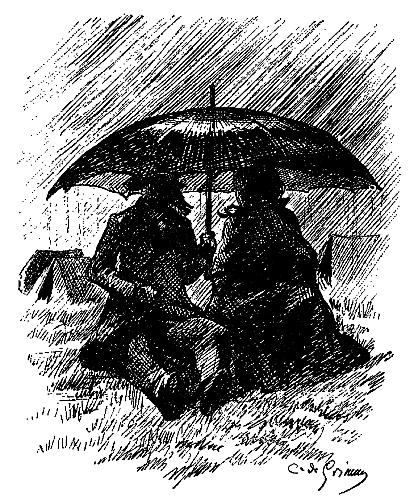 Why have there been virtually no serious developments in umbrella design since Totes Inc. brought out their folding model in 1970?
Why have there been virtually no serious developments in umbrella design since Totes Inc. brought out their folding model in 1970?
This isn’t going to be one of those blog entries that claim a fabulous new idea in the field of non-wearable rain protection. The fact is, there’s no shortage of ideas. There are thousands of patents on umbrella-related inventions but practically none have ever made it to the high street.
This wouldn’t be so odd if the standard umbrella was an elegant and simple design that worked perfectly. But despite the obvious drawbacks of the standard brolly – drawbacks that become apparrent once rain is combined with all but the lightest of winds, not to mention durability, portability or ease of deployment – the field seems stubbornly resistant to innovation.
Take the inflatable umbrella for instance. This seems like a straightforward idea that eliminates the intrinsic problems of traditional umbrella design – fiddly mechanical moving parts and strength to compacted-size ratio.
There are already a plethora of inflatable umbrella designs out there. So why can’t we buy any of them?
The only plausible explanation is some kind of conspiracy. The development of the next generation of portable rain canopies is being suppressed. For what reason we can only speculate. But speculation is the lifeblood of the conspiracy theory.
Let’s start by asking cui bono – who benefits? Umbrella manufacturers perhaps, or weather modification organisations?
Through planned, or unplanned but unaddressed obsolescence, umbrella manufacturers can continue to ensure revenues as their products are routinely broken and discarded. Is this plausible? Perhaps. The long-life light bulb took a century to produce and a reliable, no-maintenance, automobile is yet to be seen. But in other areas, such as consumer electronics, high reliability has meant that consumers need to be induced to buy new products with innovation or the appearance of innovation in design and functionality – clearly something that hasn’t happened with umbrellas.
Weather modification organisations – private corporations or government agencies – may fear their research investment into cloud seeding and similar technologies to control rainfall will not see expected returns if the public is widely indifferent to climatic caprices due to the reliability of their umbrellas. It’s a bit of a long shot, though. The main applications of weather modification, and presumably the most lucrative, are farming, storm aversion or drought relief, and have little to do with the general public.
So perhaps the source of the conspiracy is ourselves. At least here in England, can we honestly deny that a part of our identities would be lost if we had complete confidence in our rain protection devices. Surely we would hanker after the irritations of a directionless drizzle or a blustery shower like the melancholy comforts of a past love.
Where would we get our sense of martyrdom from if we could simply stride out into the open air without forethought or foreboding, knowing that whatever the elements could muster, our umbrellas would keep us warm and dry?
That is the conspiracy. There is no demand for a better umbrella because we are happier being miserable in the rain.
Tags: design, innovation, invention, portable umbrella, rain